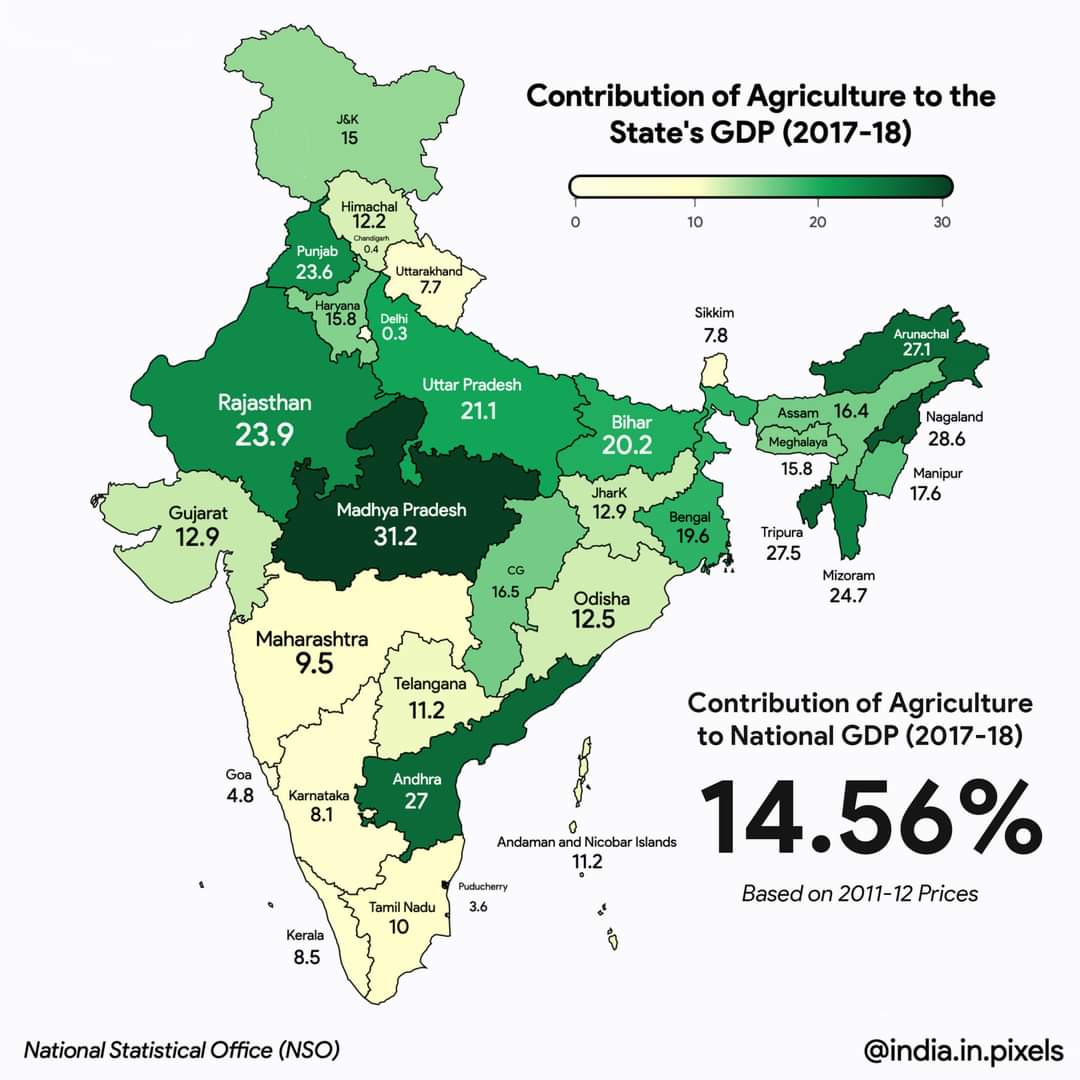23.6% of Punjab's GDP comes from agriculture - far less than Madhya Pradesh, Nagaland, Andhra, Arunachal, Tripura, Mizoram, and Rajasthan.
However, comparing what % of agricultural revenue of a state comes from rice and wheat, no state comes even close to Punjab at 50.6%
However, comparing what % of agricultural revenue of a state comes from rice and wheat, no state comes even close to Punjab at 50.6%
Between 1972 and 1986, Punjab’s agriculture grew by 5.7% every year as compared to a mere 2.3% for the entire country. In the next two decades, at 3% per annum, the state’s farm-sector growth was just a bit higher than the entire country’s 2.9%.
In the decade after that, Punjab has done so badly, its growth was less than half that of the rest of the country. While states like Madhya Pradesh grew by 9.7% between FY06 and FY15 and Jharkhand by 8.6%, Punjab grew by a mere 1.6%—the all-India number was 3.5%.
In such a situation, the usual prescription is to increase irrigation capacity or the roads network, but Punjab beats the rest of the country by a wide margin on most of these parameters.
Almost 99% of the state’s land area is irrigated; at 3.77 hectares, its average land-holding is more than three times the all-India number and, at 2,128 km per thousand square kilometers, its road density is much higher than 1,317 for all-India.
Punjab’s crisis, in fact, lies in its early success and the fact that this was dependent upon high procurement by the government—one big farmer risk was taken care of and, as the water table fell due to growing crops not suited to Punjab.
The rise in MSPs has been tempered, limiting the gains. The farmer who was used to a generous level of subsidy is now unwilling to move to other crops where the risks are higher. Close to 85% of Punjab’s area is devoted to two crops that see a minor increase in MSPs each year.
Narrative credits: @FinancialXpress
https://www.financialexpress.com/opinion/why-focus-of-punjab-on-wheat-rice-is-a-bad-idea-here-is-what-amarinder-singh-should-discuss-with-arun-jaitley/754597/
https://eands.dacnet.nic.in/PDF/At%20a%20Glance%202019%20Eng.pdf
http://mospi.nic.in/sites/default/files/publication_reports/Final1Brochure_30july2018.pdf
https://www.financialexpress.com/opinion/why-focus-of-punjab-on-wheat-rice-is-a-bad-idea-here-is-what-amarinder-singh-should-discuss-with-arun-jaitley/754597/
https://eands.dacnet.nic.in/PDF/At%20a%20Glance%202019%20Eng.pdf
http://mospi.nic.in/sites/default/files/publication_reports/Final1Brochure_30july2018.pdf
Consider supporting our efforts to make data grounded conversations accessible here :) https://patreon.com/indiainpixels

 Read on Twitter
Read on Twitter



